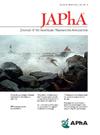Statin therapy prescribing in atherosclerotic cardiovascular disease patients with chronic kidney disease
IF 2.5
4区 医学
Q3 PHARMACOLOGY & PHARMACY
Journal of the American Pharmacists Association
Pub Date : 2025-03-28
DOI:10.1016/j.japh.2025.102395
引用次数: 0
Abstract
Background
Evidence supporting high-intensity statin therapy in atherosclerotic cardiovascular disease (ASCVD) patients and advanced non-dialysis chronic kidney disease (CKD) is lacking. Moreover, Food and Drug Administration (FDA) labeling restricts the dosing of rosuvastatin to moderate-intensity in advanced CKD. It is unclear if these limitations impact the overall prescribing of high-intensity statin therapy in advanced CKD patients.
Objective
This study evaluated real-world prescribing patterns of statin therapy among ASCVD patients with non-dialysis dependent stage 3a/3b and stage 4/5 CKD.
Methods
This retrospective, cross-sectional study identified patients aged 18 to 89 years within the University of Colorado Health system between January 1, 2019, and September 30, 2020. Patients with a diagnosis of ASCVD and CKD with an active statin prescription were included and divided into two groups, estimated glomerular filtration rate (eGFR) less than 30 mL/min/1.73 m2 or eGFR 30 to 59 mL/min/1.73 m2. Patients on dialysis, history of organ transplant or human immunodeficiency virus, or a contraindication to statin therapy were excluded.
Results
A total of 350 patients were included, 175 patients in each group. A total of 65.7% of patients in the eGFR less than 30 mL/min/1.73 m2 and 64% in the eGFR 30 to 59 mL/min/1.73 m2 were prescribed high-intensity statin therapy (P = 0.74). Among patients with eGFR less than 30 mL/min/1.73 m2 prescribed rosuvastatin, 67.6% were prescribed doses higher than the FDA-recommended dose adjustment for severe kidney dysfunction (P = 0.02).
Conclusion
There was no difference in the prescribing of high-intensity statin therapy in patients with eGFR less than 30 mL/min/1.73 m2 compared with eGFR 30 to 59 mL/min/1.73 m2. This aligns with current guideline recommendations. However, most prescriptions for rosuvastatin did not comply with the FDA dose restriction in patients with severe kidney dysfunction.
他汀类药物在动脉粥样硬化性心血管疾病合并慢性肾病患者中的应用。
背景:动脉粥样硬化性心血管疾病(ASCVD)患者和晚期非透析慢性肾病(CKD)患者缺乏支持高强度他汀治疗的证据。此外,FDA 限制晚期 CKD 患者服用罗伐他汀的剂量为中等强度。目前尚不清楚这些限制是否会影响晚期 CKD 患者高强度他汀治疗的总体处方:本研究评估了非透析依赖型 3a/3b 期和 4/5 期 CKD 患者中他汀类药物治疗的实际处方模式:这项回顾性横断面研究确定了科罗拉多大学卫生系统在 2019 年 1 月 1 日至 2020 年 9 月 30 日期间年龄在 18-89 岁之间的患者。研究纳入了诊断为 ASCVD 和 CKD 的患者,并将其分为两组:eGFR 2 或 eGFR 30-59 mL/min/1.73m2。透析患者、有器官移植史或艾滋病史的患者或他汀类药物治疗禁忌症患者被排除在外:共纳入 350 例患者,每组 175 例。接受高强度他汀类药物治疗的 eGFR 2 组患者占 65.7%,eGFR 30-59 mL/min/1.73m2 组患者占 64%(P 值=0.74)。在被处方罗伐他汀的 eGFR 2 患者中,67.6% 的处方剂量高于美国食品药品管理局针对严重肾功能不全的剂量调整建议(P=0.02):结论:与 eGFR 30-59 mL/min/1.73m2 相比,eGFR 2 患者的高强度他汀治疗处方没有差异。这与现行指南的建议一致。然而,大多数罗伐他汀处方不符合美国食品药品管理局对严重肾功能障碍患者的剂量限制。
本文章由计算机程序翻译,如有差异,请以英文原文为准。
求助全文
约1分钟内获得全文
求助全文
来源期刊
CiteScore
3.30
自引率
14.30%
发文量
336
审稿时长
46 days
期刊介绍:
The Journal of the American Pharmacists Association is the official peer-reviewed journal of the American Pharmacists Association (APhA), providing information on pharmaceutical care, drug therapy, diseases and other health issues, trends in pharmacy practice and therapeutics, informed opinion, and original research. JAPhA publishes original research, reviews, experiences, and opinion articles that link science to contemporary pharmacy practice to improve patient care.

 求助内容:
求助内容: 应助结果提醒方式:
应助结果提醒方式:


